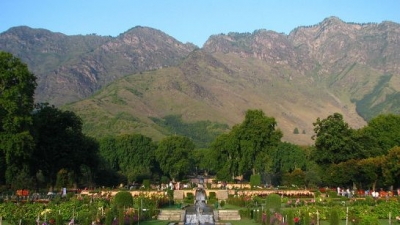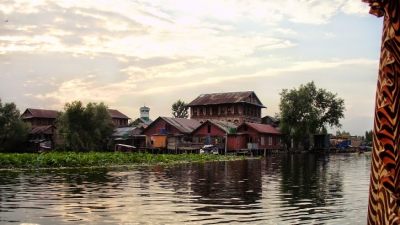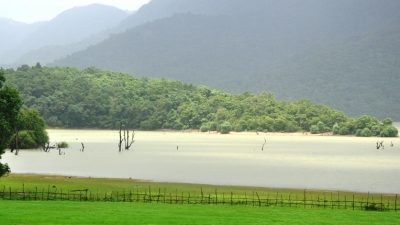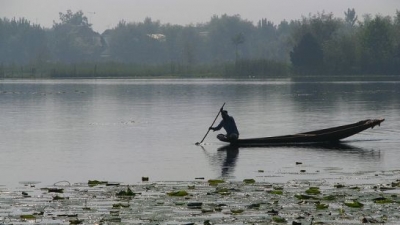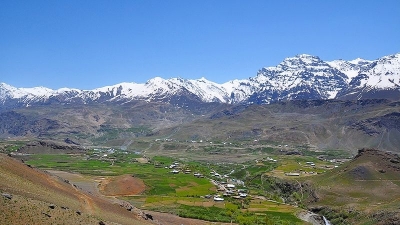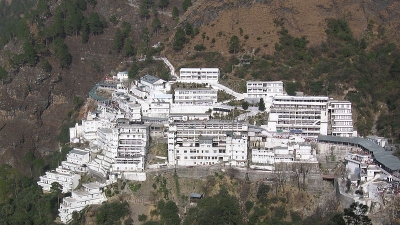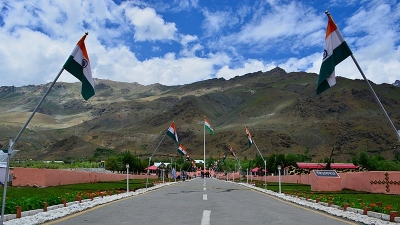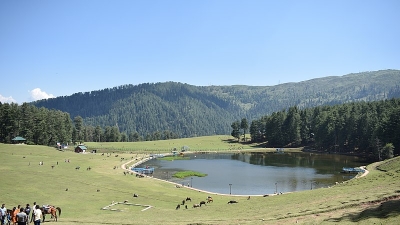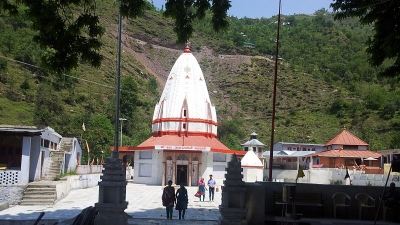Srinagar Attractions - Tourist Places To Visit In Srinagar
-
01Nishat Bagh
+ Read MoreNishat Bagh, situated on the east side of the Dal Lake was built in 1633 by Abdul Hasan Asaf Khan, father of Mumtaz Mahal and brother of Nur Jahan. The term Nishat Bagh stands for 'the garden of joy'. Some of the rarest species of flowers, chinar trees and cypress trees grow in this garden. The terraced garden is one of the largest Mughal Gardens constructed in this region.
It is popular for its beautiful fountains, widespread lawns and flowerbeds. The Zabarwan Hills form the backdrop of the garden. It is said that Shah Jahan, the famous Mughal Emperor and son-in-law of Abdul Hasan Asaf Khan, was so impressed by the garden, that he secretly hoped that his father-in-law would gift it to him. When that did not happen, Shah Jahan ordered the stoppage of water supply to the garden.
-
02Dal Lake
+ Read MoreDal Lake, popular as ‘Jewel in the crown of Kashmir’ or ‘Srinagar's Jewel’, is the second largest lake in the valley of Kashmir. This picturesque lake is spread over a large area of 26 sq km and is one of the major tourist attractions in Srinagar. The lake is set against the backdrop of the mighty Himalayas and is known for its houseboats and 'shikara' or wooden boat rides.
The houseboats at the Dal Lake take tourists around on smooth rides around the lake while the 'shikaras' offer ferry rides to and from the Dal Lake to the houseboats. The Dal Lake is separated by causeways into four major basins, namely Lokut Dal, Gagribal, Bod Dal and Nagin.
The unparallel natural beauty and scenic surroundings of the Dal Lake make it an ideal tourist destination. Travellers can enjoy beautiful sunsets here while taking rides on houseboats and 'shikaras'. Tourists can also enjoy several watersport activities organised here. Swimming, watersurfing, kayaking, angling and canoeing are some of the popular watersports that you can indulge in at the Dal Lake.
-
03Kathi Darwaza
+ Read MoreKathi Darwaza is considered to be the main entrance to the Hari Parbat Fort situated on the banks of the Dal Lake. The Sangin Darwaza constitutes another important gate of the Fort. A central domed chamber with two bays on either side makes up the structure of the Kathi Darwaza.
On the walls and ceiling of the Kathi Darwaza are etched a few Persian memorial inscriptions that shed light on the Persian culture and customs that were once followed by the Mughal rulers.
-
04Jamia Masjid
+ Read MoreJamia Masjid, built in 1400 AD, is considered as one of the oldest mosques in Srinagar. It is also commonly known as the Friday Mosque. The ancient mosque has been destroyed and restored numerous times over the years. It was last renovated under the reign of Maharaja Pratap Singh.
The design of the religious centre is a perfect blend of Muslim designs and Indian materials. This architectural style was developed by British architects and is known as Indo-Saracenic architecture; as a result, the new building of the mosque does not have a topped dome that is typical of the Muslim design.
A major attraction of this mosque is its prayer hall supported by 370 pillars, each made of deodar trunk. The contrast between the tranquillity inside the mosque and the bustle of markets surrounding it is also a feature much appreciated by visitors. The Jamia Masjid is quite a spacious mosque and has an accommodation capacity of 30,000 people at a time.
-
05Makhdum Sahib Shrine
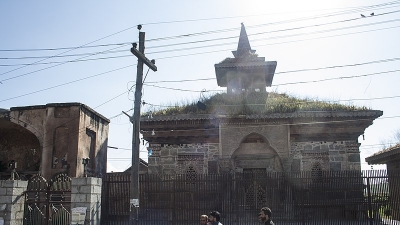 + Read More
+ Read MoreMakhdum Sahib Shrine, dedicated to Sufi Saint Makhdum Sahib also known as Hazrat Sultan is considered as one of the most holy shrines in Srinagar. The shrine is situated on the southern side of the Hari Parbat and consists of a two-storied structure. Placed below the Hari Parbat Fort, the Makhdum Sahib Shrine displays a Mughal style of architecture.
According to a popular belief, Makhdum Sahib possessed divine powers. It is because of this belief that people belonging to various communities, irrespective of religion and caste, visit this shrine to seek His blessings. The Makhdum Sahib Shrine is open to visitors throughout the year.
-
06Pari Mahal
+ Read MorePari Mahal or the house of fairies is popularly known as Quntilon and is situated above the Chashm-e-Shahi Gardens in Srinagar. The structure was constructed by Dara Shikoh, the eldest son of the famous Mughal King, Shah Jahan, in the mid 17th century.
Dara Shikoh built the garden over the ruins of a Buddhist monastery in honour of his Sufi tutor, Mullah Shah Badakhshi. The Pari Mahal was also a centre of learning astronomy and astrology. The overall length and breadth of this garden is 122 m and 62.5 m, respectively.
Located in the southwest of the Dal Lake, this garden has six terraces. Unlike other Mughal gardens, the gardens of Pari Mahal do not have water cascades. Its water tanks are located separately on the terraces and are filled with the help of underground pipes. The garden has a spring and a lawn with a variety of flowers and fruit trees growing in it.
-
07Shankaracharya Temple
+ Read MoreShankaracharya Temple is a famous Hindu temple situated in Srinagar, Jammu, and Kashmir, India. Dedicated to Lord Shiva, the temple sits on top of the Shankaracharya Hill, popularly known as Takht-e-Suleiman, on the Zabarwan Range. The exemplary location of the temple, at a height of 11,00 feet above the city surface of Srinagar attracts many visitors. The place where the temple, overlooks the beautiful city of Srinagar. According to the legends, Sri Shankaracharya meditated here for about 6 months before proceeding toward the Himalayas. The temple is dedicated to the Hindu god of destruction, Shiva.
History of The Temple
It is believed that the temple was built in 371 B.C by Raja Gopadatya, after whom the temple was named, making it one of the oldest temples in the valley of Kashmir. The name of the temple was later changed from Gopadari to Shankaracharya Temple after Adi Shankaracharya supposedly stayed here during his tour of Kashmir.
The Dogra ruler, Maharaja Gulab Singh, later added stone stairs up to the Temple for the convenience of the devotees. The electrification of this temple took place in 1925. Besides being a major religious centre for Hindus, this temple holds great archaeological value.
-
08Dachigam Wildlife Sanctuary
+ Read MoreDachigam Wildlife Sanctuary, located over an area having varying altitudes ranging from a minimum of 5500 and maximum of 14000 ft above sea level, is a popular tourist attraction in Srinagar. It was declared a National Park In 1951. Sprawled across a wide area of approximately 141 sq km, this sanctuary is home to the endangered red deer called Hangul.
Visitors can also spot the black and brown bear, leopards, musk deer and migratory birds in this sanctuary. This national park is separated into two segments, namely the upper Dachigam and the lower Dachigam. The flora of the sanctuary consists of a variety of vegetation including coniferous forests, grasslands, leaved woodlands and rain forests.
The Himalayan griffon, Himalayan weasel, yellow throated marten, leopards, long tailed blue magpie, hill fox and jackal are a few of the fauna that call this sanctuary home. This wild hub is also inhabited by various species of birds such as the blood pheasant, bearded vulture, golden eagle and crimson tapogan.
The Dachigam Wildlife Sanctuary is open all through the year but can only be entered with the permission of the Chief Wildlife Warden. The timings for visiting this park are from 5:30 am to 6:30 pm (Daily).
-
09Chinar Bagh
 + Read More
+ Read MoreChinar Bagh is the newest of all the famous gardens of Srinagar. It was recently constructed by the Tourism Department of Srinagar at a cost of around INR 3 crore. Also, known as Boene Bagh or Chinar Bagh Heritage Park, it was established with the objective of presenting the culture and traditions of Kashmir to tourists.
The park has three islands having swings, kiosks and musical fountains. An open air theatre where cultural programs are held during evenings is another attractive feature of the park. Travellers can also indulge in activities like fishing, camp fires, and swimming competitions that are organised in this park.
-
10Harwan Gardens
+ Read MoreHarwan Gardens is a beautiful, expansive picnic spot, situated at a distance of about 15 km from Srinagar. A canal, known as Sarband, bordered with chinar trees and attractive flowerbeds, flowing through the middle of the garden, adds to its attraction. It is one of the oldest drinking water reservoirs in the area and receives its water from the Dachigam Nallah.
The Harwan Gardens, however, does not have canal fountains as in the case of other famous gardens of Srinagar. Visitors here like to indulge in nature walks in the large grassy lawns of the garden. Treks to the Mahadev Mountain, located in the vicinity, can be undertaken with the garden as a starting point.
Harwan Gardens is also considered as an ideal entry to the Dachigam Wildlife Sanctuary. Travellers on a trip to Srinagar must visit the Harwan Gardens as it is one of the most popular picnic spots in the city.
-
11Nasim Bagh
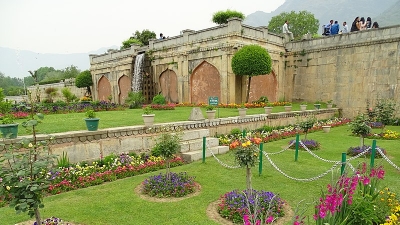 + Read More
+ Read MoreNasim Bagh also known as the 'Garden of Breezes' is one of the famous Mughal Gardens and is situated on the western side of the Dal Lake. The great Mughal Emperor Akbar had the garden constructed in 1586 during his reign. Later, in 1635, Shah Jahan, another famous Mughal king had around 1,200 trees planted in this garden.
Situated on the banks of the river Jhelum, this garden has many lakes and houseboats which are very popular with tourists. Camping facilities have also been provided to visitors here. Traditional Kashmiri handicrafts and dry fruits can also be bought here. Nasim Bagh can be visited throughout the year and the period between April and June is considered ideal for visiting this place.
-
12Hazratbal Mosque
+ Read MoreHazratbal Mosque, situated on the western side of the Dal Lake, is an important place of worship for Muslims. This shrine is known by many names such as Madinat-us-Sani, Asar-e-Sharif and Dargah Sharif. The mosque is made up of white marble and looks on to a striking view of the lake with the Himalayan mountain range for a backdrop.
A perfect blend of Mughal and Kashmiri architectural styles has been incorporated in the construction of this mosque whose history dates back to the 17th century. The term ‘Hazrat’ stands for holy or majestic and ‘bal’ in the Kashmiri language means a place or an enclosed space.
The shrine is considered to be extremely sacred as it is said to contain the sacred hair of Prophet Muhammad known as the 'Moi-e-Muqaddas'. This hair is shown to the general public only on very special occasions.
-
13Nagin Lake
+ Read MoreNagin Lake, also popular as the 'Jewel in the Ring' gets its name from the ring of trees surrounding it. The lake is separated from the Dal Lake only by a thin causeway. Several shikharas and houseboats are seen floating around the lakes which are a favourite with the tourists.
Visitors prefer swimming in this lake, as compared to others in the area, as it is deeper and the water here is less polluted. Watersports such as skiing and fibreglass sailing are also available here for the adventurous tourist. A bar and a tea pavilion called the ‘Nagin Club’ on the banks of the lake provide for a place to relax.
-
14Hari Parbat Fort
+ Read MoreHari Parbat Fort is located to the west of the Dal Lake. The great Mughal Emperor Akbar constructed the surrounding walls of this fort during 1590 and later the fort was constructed by Atta Muhammad Khan, an Afghan Governor, during the 18th century.
According to a legend, Hari Parbat was once a big lake where a dreadful demon called Jalobhava lived. The terrified people of the area then prayed to Sati, the Hindu goddess of marital felicity and longevity, and sought Her help. It is believed that She then transformed Herself into a bird and dropped a pebble on the demon’s head. The pebble gradually grew as it fell towards the earth and crushed the demon to death.
The fort is currently looked after by the Archaeological Department of Jammu and Kashmir. Tourists looking to visit this place must first obtain permission from this department. Lal Mandi Square and the Sharika Devi Temple are some other prime attractions situated close to the Hari Parbat Fort.
-
15Sangin Darwaza
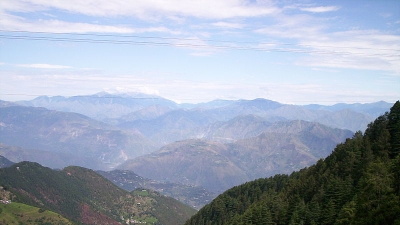 + Read More
+ Read MoreSangin Darwaza is considered to be the second entrance gate to the popular Hari Parbat Fort or Mughal Fort. The walls and ceiling of this gate are lacking the Persian inscriptions that are seen in the first gate, the Kathi Darwaza. The brick or stone masonry used to construct the gate is characteristic of the Mughal architectural style.



 Click it and Unblock the Notifications
Click it and Unblock the Notifications
